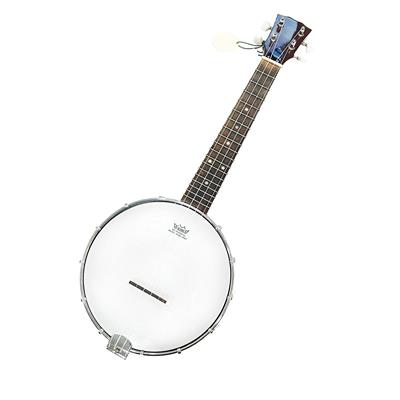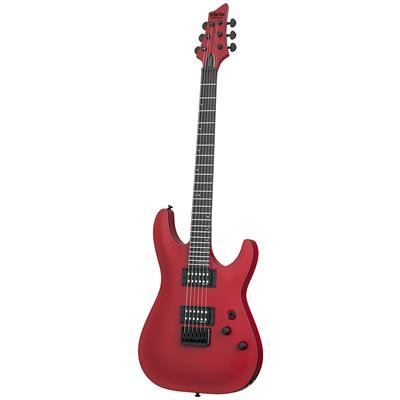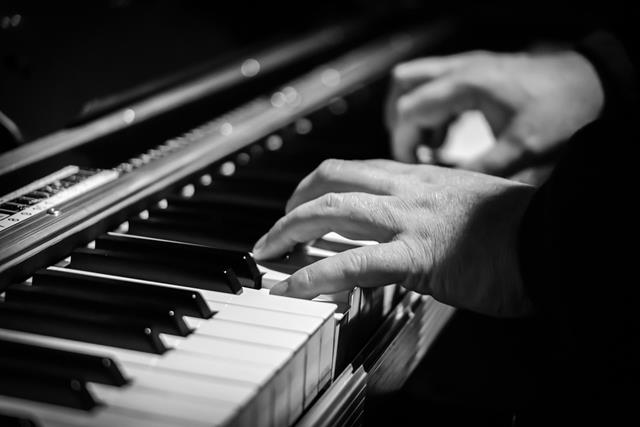So you have to go on a hard and long quest of finding the one and only – the best amplifier. Well… maybe not the best. Something more like the best amplifier for beginners and intermediate players under $300. And as much as this might sound like a deviation from the “best amplifier”, trust me, you can find a perfect one for your need no matter the price. The first thing I ask when someone wants an advice about an amplifier is what’s his or her budget. If you are looking at this article you probably already have a budget or at least the upper limit of $300. Congrats on that. While there are a lot of amplifiers under $100, they are usually for the most basic needs and we have quite a comprehensive article about the best cheap amplifiers for beginners if you want to check that out. The best guitar amplifier under $300 is where we will be talking about some good quality equipment. While the following is the list of the models that we think are the best in this price range, feel free to read the more general tips later on. And, of course, you can look through some of our blogs like “Solid-state Vs. Tube Amplifiers” and much more to figure out what you need.
Top 5 Best Guitar Amps Under 300
| Image | Amplifier Model | ||
|---|---|---|---|
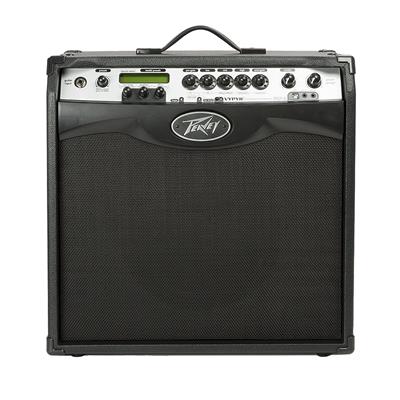 | Peavey Vypyr VIP 3 |  (4.7 / 5) (4.7 / 5) | Check on Amazon |
 | Line 6 Spider V |  (4.7 / 5) (4.7 / 5) | Check on Amazon |
 | Blackstar HT1 Series |  (4.7 / 5) (4.7 / 5) | Check on Amazon |
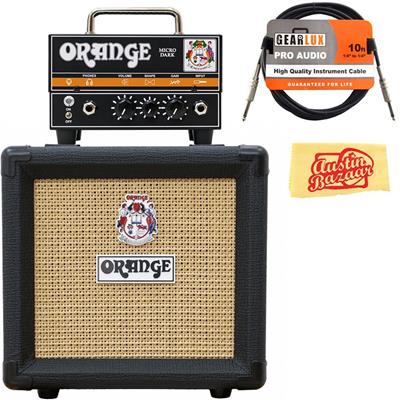 | Orange PPC108 1x8 |  (4.7 / 5) (4.7 / 5) | Check on Amazon |
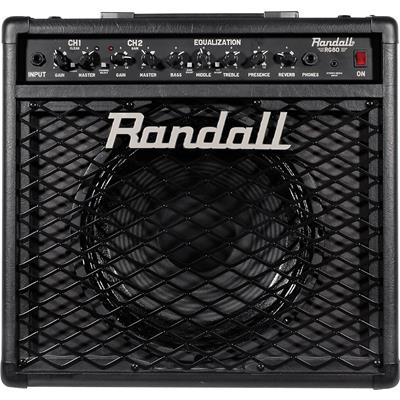 | Randall RG80 |  (4.7 / 5) (4.7 / 5) | Check on Amazon |
Peavey Vypyr VIP 3 – 100 Watt Amplifier

This solid state modeling amp utilizes Variable Instrument Input technology for amplification. This is great if you want versatility in sound and want bass, acoustic, and electric all in one equipment. While some modeling amps require you to access the controls through a computer you won’t be needing that with this model. While this model is amazing for daily practices it will also come in handy if you want to record at home. That is all due to the USB bi-directional data and audio port that will allow you to connect and record, store lessons and presets. While most people perfect tube amps for the best tone, this Vypyr VIP 3 comes the closest to emulating the sound of a tube amplifier. This model has a lot of effects and you can actually use five simultaneously. All in all this 100-watt amp might not weight a lot or look like a beast but it delivers on tone like no other in its price range.
Pros:
- Can be utilized with electric
- Acoustic and bass guitars
- Extensive set of presets and available sounds
- Great build and sound quality
Cons:
- Does not have a speaker output jack
- Some built-in effects drop the volume of the presets
Line 6 Spider V 60 Wireless Ready Modeling Amplifier

If you have struggled to find a quality amp at a price that won’t make you starve for weeks on end, you are not the first one. That is especially true with cheaper models but once you get into the $300 zone you can expect much better quality. Basically, you should demand quality because the price is not the equipment’s main advantage. The same goes for Line 6 Spider V 60 Wireless Ready Modeling Amplifier. This model offers quite a bit of what you will be paying. First of all, this is a 60-watt amp with a two-way speaker system that is great for electric and acoustic sounds. While the tone that this one produces replicates the tube amp tone as closely as possible it is easier to maintain (and I won’t even mention the price difference). The Spider V 60 is also equipped with an onboard metronome, tuner, and real drummer loops. If you want to practice but not disturb your neighbors or that annoying roommate of yours, who seems to get enraged at every small sound, you can easily plug in your headphones and carry on.
Pros:
- Quite a few amp
- Cabinet and effect models
- On-board drum loops
- Metronome
- Tuner and looper
- Amazing clean tones
Cons:
- Bass response could be better
Blackstar HT1 Series Guitar Combo Amplifier

Whether you want an amp just for practice or maybe you plan on gigging and recording, Blackstar HT1 Series Guitar Combo Amplifier has got you covered. This seemingly small equipment will be a big advantage (if not the biggest) in the arsenal of your accessories and devices. After all, even if you have an amazing electric guitar it can’t do much without a complementary amplifier that will blow your socks away. This specific Blackstar model features Infinite Shape Feature circuit that gives you all the control of the tone and characteristic of the sound. You might know the general gist of the watts and what they mean so when you look at this “1-watt amp” don’t be scared. That definitely does not mean that the only audience that will hear it is the ants on your walls. This baby has power and on top of that great tone that even a beginner will find easy to maneuver and manipulate.
Pros:
- Easy to use even for beginners
- Infinite Shape Feature takes tone shaping to a whole new level
- Affordable tube magic
Cons:
- Dirty channel can get a bit muddy
- Does not have on-board reverb
Orange PPC108 1×8 Closed-Back Speaker Cabinet Bundle

If you are into music, you have probably come across the name Orange at some point. They are great at producing a range of amps, but they are especially beloved for quality, budget-friendly amps that will be a perfect fit for intermediate and beginner players. The 20W Micro Terror valve amp is very compact and easy to carry around. It has two inputs, a traditional TRX input and an auxiliary input, which you can connect to your MP3 or PC (the latter is not affected by the gain and tone controls). Despite its size, Micro Terror can be a great amp either for studio or your live performances. It comes with Orange PPC108 speaker cabinet, which also has a compact design. It is 20 watts with 8″ of the World Speaker. It shows its best qualities, when you pair it with matching amp head. This bundle is a great option, if you want something affordable and all-inclusive.
Pros:
- Produces the signature tone of Orange amps
- Quite powerful, loud (but in a good way)
- Unbelievable sound and clarity
Cons:
- If you rely on clean tones, this might not be the one
Randall RG80 Guitar Amplifier

Rendall RG80 80-watt amplifier holds a lot for such a small and relatively cheap model. You get a lot of versatility, since it offers clean and overdrive channels. The former adds brightness to your sound, while maintaining its purity. The latter can add distortion, overdrive and saturation to your sound. With three different types of EQ, you can adjust bass, midrange and treble. And there is more: you can apply presence and reverb to your tones. I think my favorite thing about this model is its wide range of sound shaping options. All in all, this model with its 12″ speaker manages to deliver on grand sound with thick and saturated tones that everyone will envy. The sound and effects are very versatile. Most importantly this amp’s ability to go from soft classic rock tones to heavy, metal notes will be a great selling point for a lot of people (including me).
Pros:
- Excellent build quality
- Useful features and sounds
- In-built effects loop
- Easy to tweak
Cons:
- The sound package is not that versatile
- Clean tones can get muddy with certain settings
Does not matter if you started playing the guitar yesterday, a week ago, or two years ago at one point, you will probably want to gig or record. Maybe it does not have to be a huge arena with thousands of people or a big recording studio but the idea of gigging seems to be one of the most exciting things for any player. So that’s why an amplifier is one of the major things you need to get right after you buy a guitar. Fortunately, there are a plethora of amplifiers ranging in price and type. Unless you have thousands of dollars in your saving account (and even if you do ) you probably don’t want to spend more than you have to on an amplifier. Nevertheless, you have to walk a very thin line between good quality and affordable and bad quality and cheap models. Don’t make a mistake that many have done (including me). Don’t go for the cheapest amp you can find thinking that a guitar is the main thing that matters while an amplifier is just a secondary equipment.
In either case, if you are looking through lists of the best amplifiers under $300, you have probably made a very wise decision to invest a bit of money in the equipment. While we love some of the best amplifiers under $200, a few bucks go a long way. That is especially true with amplifiers. So if we are talking $200, it’s more a beginner, budget-friendly list while with $300 models you are getting yourself into some quality models that are usually amazing for intermediate players as well (not to mention they are much more recording and gigging-friendly).
One of the major things you need to think about if this is your first foray into the world of amplifiers is the wattage. You might have noticed that most amp models have “watt” either in the title or have that as the first line in the description. That, my friend, is because the wattage is one of the major things that determine the strength or power of your amplifier (a.k.a. How loud your sound is going to be).
But just like with most instruments and equipment things are not as clear-cut as we wish. For instance, you cannot look at a tube amplifier and solid-state amplifier that have the same wattage and expect them to actually produce the same volume. Most tube amps are much louder than solid-state amps. Sometimes even a 10-watt tube amp will produce better volume than a 60-watt solid amp. While you might think that you will only be practicing at home and don’t need a lot of wattages, think longer. You never know if one day you will want to gig. And if you do your amplifier should have enough wattage not to be drowned out by other instruments.
While there is no definite way to say how loud and powerful the amplifier actually is without listening/playing, there are very general guidelines. For instance, amplifiers with wattage under 30 are the least “powerful” ones. Then you get ones over 30 watts. They are pretty decent and will work pretty well even during gigging with other instruments. The strongest ones are the over 60 watts but even in that case it depends on the construction and type of amplifier. So instead of going just by numbers, listen to professionals, people who have had the same model and just watch people perform on Youtube and you will get the gist.
Conclusion
I know… There is a lot to take in. Amplifiers are not the easiest thing to choose especially if you are new to guitars and all of their “necessary” equipment. I hope this article was helpful and if not… well I can only wish you luck on this somewhat long (if you actually do proper research) and arduous process. If somewhere in the middle of this article you realized that instead of the best guitar amp under $300 you want to go for something cheaper you can always browse throughout a list of the best amplifiers under $200. OR maybe you have decided to level up and want an amplifier under $500. In either case, we got you covered. Good luck.




